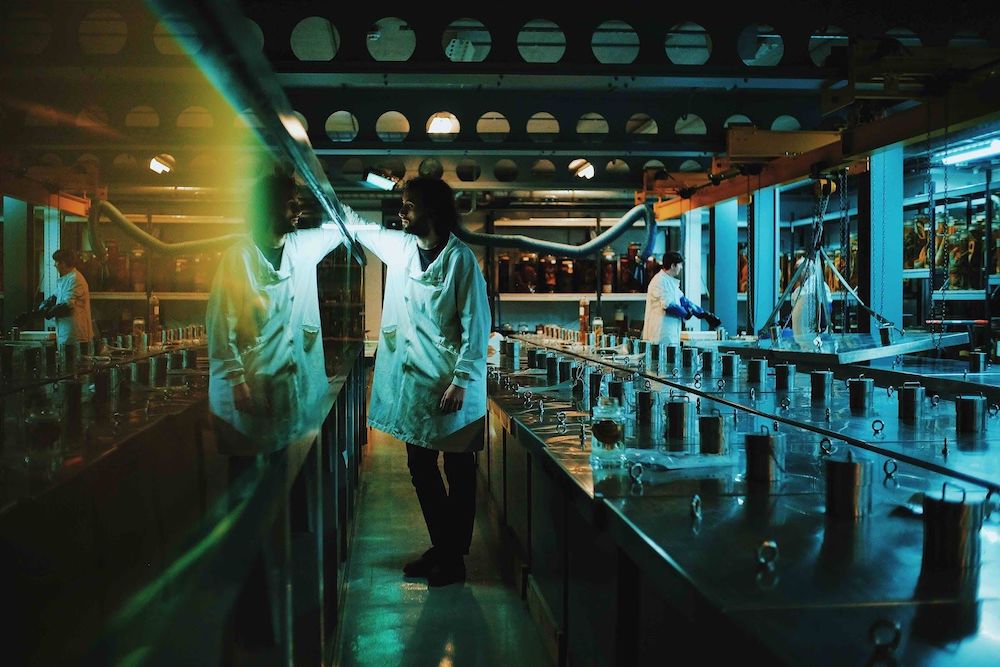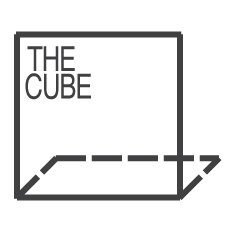
Shezad Dawood
Leviathan
Episode 1: Ben, 2017, 12:52 min.
Commissioned by University of Salford Art Collection, Outset Contemporary Art Fund and Leviathan – Human & Marine Ecology, with support from The Contemporary Art Society
Episode 2: Yasmine, 2017, 22:10 min.
Commissioned by CREAM – University of Westminster and Leviathan –Human & Marine Ecology
Episode 3: Arturo, 2017, 17:25 min.
Commissioned by Leviathan – Human & Marine Ecology
Episode 4: Jamila, 2018, 10:36 min.
Commissioned by Arts Council, England, Barakat, Seoul, HE.RO Amsterdam and Leviathan – Human & Marine Ecology
Episode 5: Ismael, 2018, 19:28 min.
Commissioned by A Tale of a Tub, Rotterdam, and a Canadian partnership between Fogo Island Arts Museum of Contemporary Art Toronto, and Toronto Biennial of Art
Episode 6: Ding Ling & Senait, 2020, 18:46 min.
Commissioned by CCA Tel Aviv, Outset Foundation for Contemporary Art, The (He)art for (He)art Program (Francisca Viudes), and Arts Council England. Image courtesy of UBIK Productions.
This film and the after talk are exclusive for the exhibition.
Screening + After Talk
Time | 2022.03.05 (Sat), 2:00-5:00pm
Venue | Guling Street Avant-garde Theatre
Speaker | Bo-Yi Shen, Shih-yu Hsu
Booking | https://forms.gle/dbZHJCFDct8vbtUD6
Special Screening + After Talk
Time | 04.10 (Sun.), 2:00-5:00pm
Venue | Guling Street Avant-garde Theatre 2F Gallery (No.2, Ln. 5, Guling St., Taipei)
Speaker | Kuang-Chi Hung (the Associate Professor of Department of Geography, NTU)
Respondent | Bo-Yi Shen, Shih-yu Hsu
Booking | http://forms.gle/8KxkXQQjiLHst8nm8

Leviathan is a proposal to envision a future that is very much like our present, where the boundaries of the social, political, and scientific are genuinely challenged. Historically, Leviathan is the primordial sea serpent depicted in Jewish mythology, brought to collective consciousness by Thomas Hobbes’ treatise on human nature. In Dawood’s expansion of the mythology with socio-philosophical critique, Leviathan takes the form of meditations on time, space, human nature, ecology, and the source and unfolding of life through an episodic reveal of connecting threads and contradicting realities.
Leviathan can also be associated with its roots in the Hebrew word lavah, meaning to couple, to connect and join, as the project interweaves seemingly disjointed practices and bodies of knowledge, drawing outstanding parallels between species, communities, and cultures. Based on extensive and thorough research, Leviathan is the outcome of ongoing dialogues with a wide range of marine biologists, oceanographers, political scientists, neurologists, and trauma specialists. This approach is typical for Dawood’s practice, which often involves collaboration, working with groups and individuals across different territories to physically and conceptually map far-reaching lines of inquiry.
-Curator|Fatoş Ustek
Shezad Dawood
Curator : Fatoş Ustek
Fatoş Üstek is director of Liverpool Biennial, jury member for Turner Prize 2020, external member of acquisitions committee for Arts Council Collection (2018-2020). She is recipient of curatorial fellowship at Tornabuoni Art, London 2018, curator of Do Ho Suh’s largest commission in the UK (2018-2020), co- commissioned by Art Night and Sculpture in the City. She formerly acted as director and chief curator of DRAF (David Roberts Art Foundation), curator of miart Talks (Milano, 2018); Art Night (East London, 2017); and fig- 2, 50 projects in 50 weeks ( ICA Studio, London, 2015). Üstek is contributing editor to Extra Extra, chief-juror for the Celeste Prize 2017. She is a founding member of Association of Women in the Arts (AWITA); Art Nights Trustee, member of AICA UK, and ICI Alumni. She curates, lectures and publishes internationally, recently at Sotheby’s, Goldmisths College, RCA and in art magazines such as Mousse, L’Officiel and Camera Austria.
Talk Summary
2022.03.05 (Sat.)
Shih-yu Hsu |
Shih-yu began her presentation with Shezad Dawood’s first exposure in Taiwan — Towards the Possible Film in the 2014 Taipei Biennale. She gave a short introduction to Shezad Dawood’s artistic background, oeuvre, and the complexities in Dawood’s multi-medium practices, covering VR, installation, tapestry, sculpture, and videos. Leviathan itself is also created in different media and continued growing with each exhibition. Then Shih-yu connected the spirit of Leviathan to the concept of deep time. She showed a cultish performance in the last stop of Dippy the dinosaur’s tour in the UK. The fossil was seen in the first episode of Leviathan. Afterward, She introduced the octopus’ evolution history, showing the possibility of different sensing and being existing long before human history. She spoke of her recent translation and reading group with Ren Yu Wu. They together translated Bodies of Water by Astrida Neimanis. Neimanis’ theoretic framework also responded to the line of thinking in Leviathan. By introducing the bag theory by Le Guin and the term “hypersea” by McMenamin and McMenamin in Chapter 3 in Bodies of Water, Shih-yu addressed the interdependence of the ocean and the human being. How could we cultivate another way of being on earth if we view ourselves as another branch of sea creature instead of land animal? Following materialist feminist thinking, what could we learn from the water, the ocean, and critters in the fluid? What is the possible becoming, making, and worlding on the level of ontology, epistemology, and ethics?
Bo-Yi Shen |
This talk focused on how Shezad Dawood’s film Leviathan is moving towards a planetary scale of hybrid fluid, and how the artist speculates the possibility of the future to enable us to reflect on the reality of today’s society.
He began with Thomas Hobbes’s illustration of Leviathan from a land-centered perspective, contrasting it with the unstable Ship of fools (akin to the present refugees adrift at sea) which is drifting at sea; then using J. M. W. Turner’s Slave Ship (1840) and Lucien CASTAING-TAYLOR & Véréna PARAVEL’s Leviathan (2012) to discuss fragmented perspectives and the fluidity of ambiguous abstractions; then complement with Allan Sekula & Noël Burch’s The Forgotten Space (2010) and Hito Steyerl’s Liquidity Inc. (2014) to discuss the issues concerning oceans and globalization, and the ever-diasporic mobility of people in it. The talk also unfolded Shezad Dawood’s Leviathan from Allan Sekula’s global scale and Hito Steyerl’s work extending the concept of “speculative” as well as the hybrid complexities of the assembled ready-made video “essay.” The contrast between “Blue Marbles” and “Heterogeneous Planets” is used to discuss the stains and fluidic appearance of planetary scales that cannot be data-determined.
Finally, Shezad Dawood’s interdisciplinary, cross-media, and multilingual weaving approach is discussed. At the same time, making a connection with the images of cross-species interweaving is a way to propose a “heterogeneous Leviathan” network linkage. This is no longer a stable subject that stabilizes human-centric (Country Leviathan), but rather open to the unpredictable otherness while questioning the taken-for-granted reality of the present. In the process of watching the film, the viewer is no longer a peaceful observer of “nature” (objectification of nature) but is also drawn into the work by a special atmosphere of image manipulation. We have never been on the outside of a crisis (climate change or racial discrimination); we are already in a crisis and also an opportunity for change.
2022.04.10 (Sun.)
Kuang-chi Hung |
It is well-known that Leviathan was a sea monster depicted in the Bible. Hobbes reimagined it as the symbol of the absolute sovereign with the union of regal and divine rule. Those who are familiar with Science and Society Studies will instantly think of Steven Shapin and Simon Schaffer’s classic work, Leviathan and the Air Pump, where the two historians of science argued that when it comes to contemporary (then the 1980s) science debates, compared to Boyle’s attempt to demarcate between science and society, Hobbes was correct in drawing the parallel between science and political orders. Dawood’s film presented another Leviathan that most are not aware of. As a sea monster, Leviathan symbolizes disorderliness, chaos, and violence, while as a giant land spirit, Leviathan embodies rationality, orderliness, and peace. Are they two different Leviathans or the two aspects of the same Leviathan? Or, is Leviathan a Janus, representing transitions, passages, and the limbo between the past and the present? A post-era is always eagerly anticipated whenever a paradigmatic crisis ensues—post-modern, post-structural, post-pandemic. But maybe wandering amongst these endless passages is like humanity’s never-ending adolescence?


